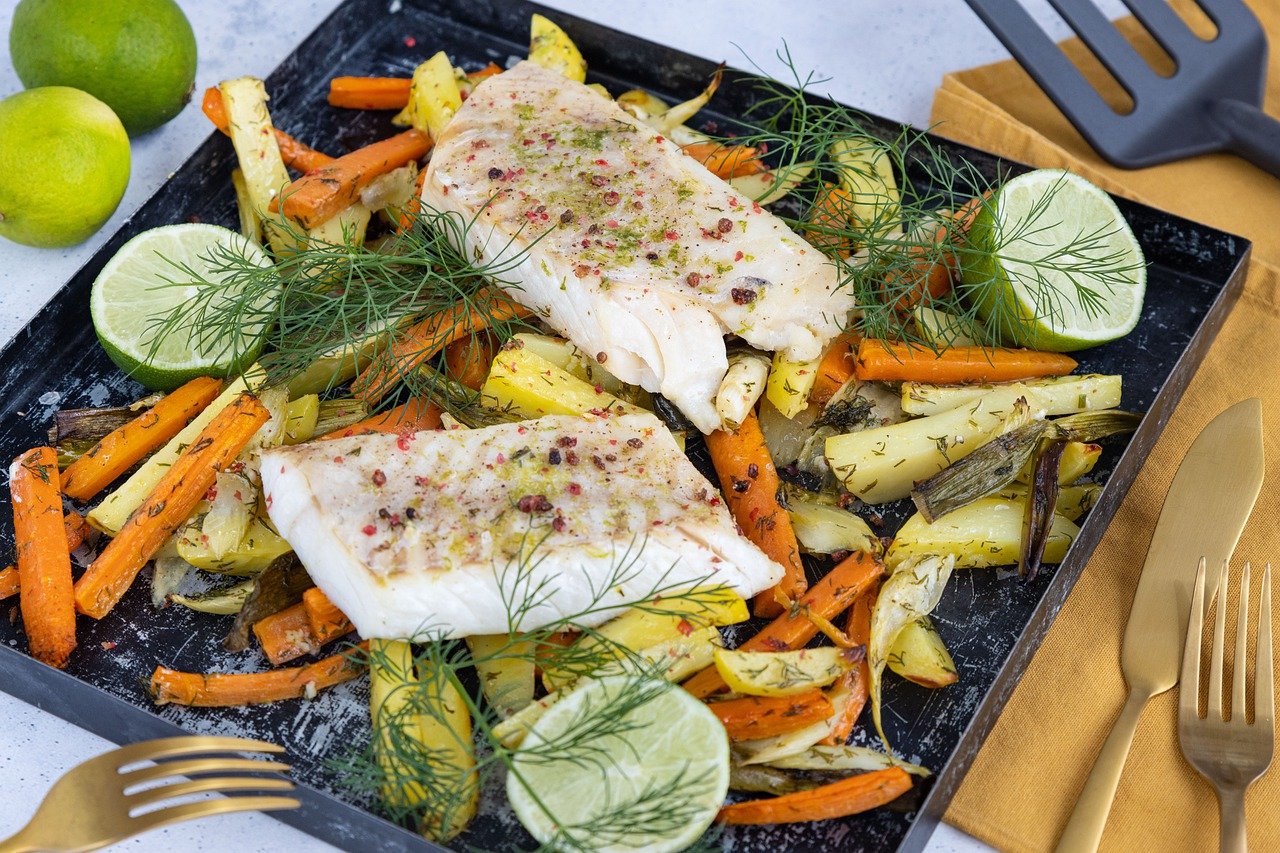If you’re running a food and grocery blog, driving traffic to your website is essential. This comprehensive guide will help you create and manage an SEO campaign tailored to topics like grocery shopping, food price inflation, meal planning, and smart shopping. You’ll learn how to boost your blog’s visibility, attract the right audience, and establish your authority in this niche.
Section 1: Keyword Research and Selection
1.1 Understanding Your Audience:
- Identify your target audience interested in grocery shopping, meal planning, and budgeting.
1.2 Keyword Research Tools:
- Utilize tools like Google Keyword Planner to discover keywords like “smart grocery shopping,” “food price inflation tips,” and “budget-friendly meal planning.”
1.3 Long-Tail Keywords:
- Explore long-tail keywords such as “how to save money on groceries” and “organic gardening for budget-conscious foodies.”
Section 2: Content Creation and Blog Topics
2.1 High-Quality Content:
- Create informative, engaging, and well-researched content related to your selected keywords.
2.2 Blog Topics:
- Consider blog topics like “10 Ways to Beat Food Price Inflation with Smart Shopping,” “Budget-Friendly Meal Planning for Families,” and “The Benefits of Joining Food Cooperatives.”
Section 3: On-Page SEO
3.1 Meta Tags:
- Optimize meta tags (title and description) for each page with relevant keywords like “grocery shopping tips” and “meal planning on a budget.”
3.2 Content Structure:
- Use headers (H1, H2, H3) to structure your content for search engines and readers. For instance, “Smart Shopping Strategies” (H1) and “Organic Gardening for Savings” (H2).
3.3 Image Optimization:
- Optimize images with alt text, using keywords such as “grocery shopping savings” and “budget meal planning.”
Section 4: Social Media Integration
4.1 Content Sharing:
- Share your blog posts and pages on social media platforms with engaging captions. For example, share “10 Tips for Smart Grocery Shopping” with the hashtag #SavvyShopper.
4.2 Engagement:
- Actively engage with your audience by responding to comments and questions. Encourage discussions related to your content.
4.3 Paid Promotion:
- Consider paid social media advertising for posts like “Joining Food Cooperatives: A Budget-Friendly Approach.” Use targeting options to reach an audience interested in your niche.
Section 5: Link Building Strategies
5.1 Guest Blogging:
- Write guest posts for other food and lifestyle blogs. Include relevant backlinks in your content, such as “Learn more about smart grocery shopping.”
5.2 Collaboration with Food Cooperatives:
- Collaborate with local food cooperatives and link to each other’s websites. For example, “Check out our partners at [Cooperative Name].”
5.3 Blogger Outreach:
- Reach out to bloggers in the gardening and budgeting niche for collaborative content. Feature each other in your respective blogs.
Section 6: Monitoring and Analysis
6.1 Google Analytics:
- Use Google Analytics to track website performance, including traffic sources, user behavior, and conversion rates.
6.2 SEO Tools:
- Regularly monitor your website’s SEO performance with tools like Moz or SEMrush.
6.3 Adjust and Optimize:
- Continuously adjust your SEO campaign based on data and insights. Optimize your content, meta tags, and keywords for better results.
Conclusion: A Plan of Action
- Week 1-2: Keyword Research and Selection
- Identify your target audience.
- Research and select keywords related to your blog topics.
- Week 3-4: Content Creation and Blog Topics
- Write high-quality, keyword-rich content.
- Publish blog posts based on the selected topics.
- Week 5-6: On-Page SEO
- Optimize meta tags and content structure.
- Ensure images are well-optimized with relevant keywords.
- Week 7-8: Social Media Integration
- Share content on social media.
- Engage with your audience and consider paid promotion.
- Week 9-10: Link Building Strategies
- Explore guest blogging opportunities.
- Collaborate with food cooperatives and other bloggers in your niche.
- Ongoing: Monitoring and Analysis
- Use Google Analytics and SEO tools.
- Adjust and optimize your campaign based on data and insights.
More SEO Tips:
1. Begin by setting objectives for your SEO campaign – Ask yourself what you want to get out of the campaign. Do you want to increase website traffic or rank higher in search engine results? Having a clear goal will help guide your strategy.
2. Set a budget and timeline – Decide how much of your resources you’re willing to commit to the SEO campaign, such as time and money. Also, decide how long you’re willing to run the campaign and set deadlines for key milestones within that timeline.
3. Develop keywords – Conduct thorough keyword research to identify which terms are most relevant for your food and grocery blog, then build a comprehensive list of related keywords that will help you target specific topics when creating content.
4. Create content for search engines – Develop well-written, informative content on topics related to food and grocery that incorporates your targeted keywords. Focus on providing value and do not stuff your posts with keywords; instead, use them naturally throughout the post. Also, consider using multimedia content like videos or podcasts since search engine algorithms favor this type of content over text-only posts. Additionally, make sure you optimize each page by adding meta tags, image alt tags, page titles, etc., to maximize visibility in search engine results pages (SERPs).
5. Monitor progress – Track the performance of your SEO campaign by studying website analytics and other tracking methods such as analytics tools like Google Analytics or link-building tools like Moz Link Explorer or Ahrefs to see which areas need improvement or optimization for better results in search engine rankings.
6. Test and optimize – Use A/B testing techniques to test different elements of your SEO campaigns in order to find what works best and make data-driven decisions that can improve the success of the overall campaign.
FAQs about Creating and Managing an SEO Campaign for Your Food and Grocery Blog
1. What is an SEO campaign, and why is it important for a blog?
- An SEO campaign is a strategic effort to improve a website’s visibility on search engines like Google. It’s crucial for a blog because it helps attract more organic traffic, making your content more discoverable.
2. How can I find the right keywords for my food and grocery blog?
- Start by understanding your audience and using keyword research tools to discover terms related to grocery shopping, meal planning, and budgeting that people commonly search for.
3. Why are long-tail keywords important, and how do I use them effectively?
- Long-tail keywords are specific and can help you reach a more targeted audience. Use them naturally in your content, such as in blog post titles or headings.
4. What makes high-quality content, and why is it important for SEO?
- High-quality content is well-researched, engaging, and provides value to your readers. It’s essential for SEO because search engines prioritize content that answers users’ questions.
5. How do I structure my content for SEO, and what are header tags?
- Use header tags (H1, H2, H3) to organize your content. H1 is for the main title, and H2 and H3 are subheadings. These tags help search engines understand the structure of your content.
6. Why should I optimize images, and how do I add alt text?
- Optimized images improve page load speed and user experience. Alt text is a description of the image that makes it accessible for those with disabilities and provides context to search engines.
7. How can I promote my blog content on social media effectively?
- Share your blog posts with engaging captions, relevant hashtags, and images. Interact with your audience by responding to comments and questions.
8. What are backlinks, and why are they essential for SEO?
- Backlinks are links from other websites to your blog. They’re crucial for SEO because they indicate your blog’s authority and trustworthiness in the eyes of search engines.
9. What is guest blogging, and how can it help my blog’s SEO?
- Guest blogging is writing content for other websites in your niche. It can help your blog’s SEO by providing valuable backlinks and expanding your audience.
10. How can I monitor the success of my SEO campaign, and what should I do if it’s not working as expected?
- Use tools like Google Analytics and SEO software to track your blog’s performance. If your campaign isn’t working, analyze the data, and adjust your strategy by revising content, keywords, or promotion methods.
Tags:
- SEO campaign
- Keyword research
- Long-tail keywords
- High-quality content
- Header tags
- Image optimization
- Social media promotion
- Backlinks
- Guest blogging
- Monitoring SEO










